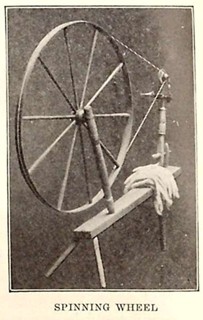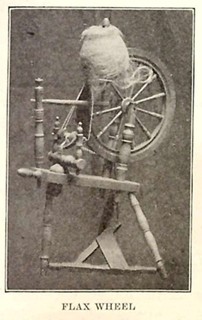THE SIMPLE MACHINES OF THE NEW HOME pgs 85-89
In selecting a place for the cabin the owner might be fortunate enough to find a living spring of water near by. If not so lucky, he must have a well and draw the water with a bucket. There were no wind pumps or engines to raise the water, and perhaps not even a windlass to pull the bucket up by turning a crank, but there was a simple way by which any man could have some help in lifting the water. For example, by resting a yard stick or any such bar of wood across a support it will be balanced when suspended at the middle, but by hanging something on one end it will tip up.
Such a simple machine was used to pull up the water bucket out of the well. A heavy pole, bigger at one end than at the other, was hung in a forked post set deep into the ground. On the big end of the long pole a load of chunks or wood or of rock was fastened; and to the small end there was fastened a light pole which carried the bucket down into the well. This �well sweep� was not hard to pull down and when the bucket was full of water, the load on the big end of the pole helped to pull it up. Later a pulley and a rope with a bucket at each end was used to draw the water. In some neighborhoods the tall well curb with the pulley at the top may yet be found.






